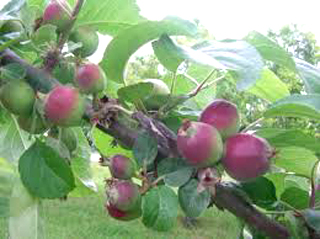 The sun has got his hat on, hip hip hip hooray! That’s a whole 3 weeks now, and more in prospect, even if only for the short term. The persistent dry spell is a little worrying though, and tiring. It’s a job to keep up with the watering even in pots, and if you are blessed with a good bit of garden, you might even be feeling the need to water long-established beds. We certainly are.
The sun has got his hat on, hip hip hip hooray! That’s a whole 3 weeks now, and more in prospect, even if only for the short term. The persistent dry spell is a little worrying though, and tiring. It’s a job to keep up with the watering even in pots, and if you are blessed with a good bit of garden, you might even be feeling the need to water long-established beds. We certainly are.
Plants are flowering and going over very quickly in this heat, but the most effective time to water is very first thing in the morning – so set the alarm a little earlier and wander round with the hosepipe or can in one hand, and a cup of tea in the other. Pyjamas and bathrobes are acceptable. Watering at this time gives the chance for plants to take up the water before it evaporates. You could water in the evening, but common lore is that this encourages slugs to emerge and nibble at your cherished veg and flowers.
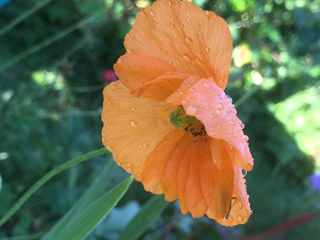 One thing to be sure of though is the difference between a plant that is thirsty, and needs a good soak, and a plant whose soft growth has simply wilted in the heat of the day, and will pick up again as soon as the temperature drops. Check the soil around your plant, and the weight of any pots if you are able to pick them up. If the compost or soil seems damp an inch or so down, the plant probably doesn’t need watering yet.
One thing to be sure of though is the difference between a plant that is thirsty, and needs a good soak, and a plant whose soft growth has simply wilted in the heat of the day, and will pick up again as soon as the temperature drops. Check the soil around your plant, and the weight of any pots if you are able to pick them up. If the compost or soil seems damp an inch or so down, the plant probably doesn’t need watering yet.
Overwatering can cause other problems such as leggy and even softer growth, which is vulnerable to aphid attack or simply saturated roots, which can easily moulder in this heat. If a plant is still floppy first thing in the morning, then a watering is needed for sure.
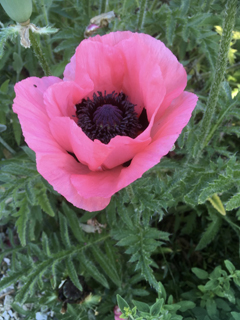
It is also very important to make sure you allow for this hot weather in the care of your fruit trees and bushes, particularly apples, crab apples and pears etc. If your tree has only been planted a year or so, apply an extra can or two a week so that the roots do not become stunted.
Even established trees need some extra attention as because we had such a good spring, (for fruit trees anyway), most of our trees are laden with baby fruit. If a tree becomes stressed for lack of moisture, its first line of defence will be to drop its fruit. While we expect to do some thinning this time of year (see below),
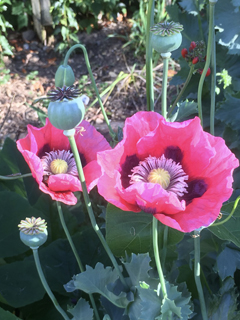
you don’t want to lose it all, so keep trees hydrated. Also, you can put a layer of mulch round the base of the tree to help keep moisture in – good rich compost or well-rotted manure is ideal.
So, do you need to thin the fruit? This applies principally to apples and pears, but also peaches and nectarines, if you’re lucky enough to be able to grow them. Mother Nature may have done some of it for you in the “June drop”, whereby a tree with lots of baby fruit will drop a good proportion of it. This is perfectly normal, and is the tree’s way of lightening its load to avoid overstretching its resources. If all the fruits were allowed toremain, you are likely to end up with lots of tiny fruit instead of fewer fully developed fruit. Quantity, but no quality. In addition, it may mean the tree does not fruit well the following year, because frankly, it overdid it, and finally, it can weaken the tree to the point that disease can take hold.
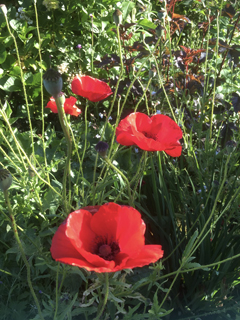
What you are looking for is to leave one or two fruits maximum per cluster, giving it plenty of room around it, and avoiding fruits touching once they are fully grown. Depending on the eventual fruit size, this could mean leaving a gap of 6 inches between standard dessert apples for example, but a much bigger gap for cookers. Just snap or snip off any excess. It is slightly heart-breaking to do so, but it is good for the composter, where these thinnings can all go, and better for the tree ultimately.
Deadheading is a pleasant, light job that pays dividends in July. The more you deadhead, the more new flowers you will encourage. If you stop a plant producing seed (it’s raison d’être, after all), it has to try again with a new flower. Repeat flowering roses in particular benefit, as do many herbaceous perennials, some of which such as nepeta (catmint), centuarea montana (knapweeds), most perennial geraniums (NOT pelargoniums), knautia and aquilegia benefit from a complete chop down to encourage fresh new growth and flowering from the base.
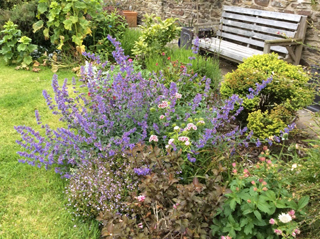
It is a very meditative task, and most enjoyable as that last gardening job before bed, or before the midges and horseflies drive you indoors. There seem to be insane numbers of horseflies this year so watch out. If, like us you don’t react well to them, sprint for the bite stick and stop it developing into something unbearably itchy.
And in July, take time to stop and stare. This morning, during an early morning hose session, we couldn’t help but be drawn in by the variety and perfection of the various types of poppy in the garden. There are the ethereal and graceful annual poppies which last barely a day, seem to turn up from nowhere, but seed around profusely; the oriental poppies, which form clumps of grey serrated foliage and have big blousy blooms, and which are very easy to divide and share with friends;
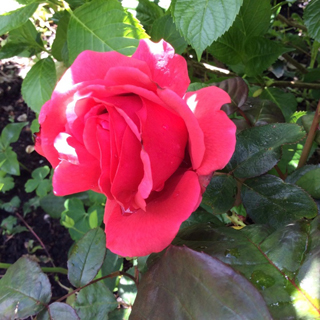
and the inbetweeners – perennial rhoeas poppies which form more delicate clumps but seed around too. Enjoy their short-lived glamour.
One last thing – a little plug for a subject close to our, and we suspect, many of your hearts……..If you are anywhere near Pengelly over the next few weeks, please drop in and support our efforts to raise money for Cancer Research by buying some cut flowers from our gardens, produce we have made, or simply put any spare coppers in our collection bucket. A select (slightly mad, definitely worried) group of us (Sarah, Helen, Jo and Emma) are doing tandem skydives at Perranporth to raise money on 11 July (weather permitting) and it would be great if your generosity could support our insanity. Hopefully we won’t be in plaster as we write next month’s column! Eek!
Sarah Daniel and Helen Robins, Pengelly Garden Centre

